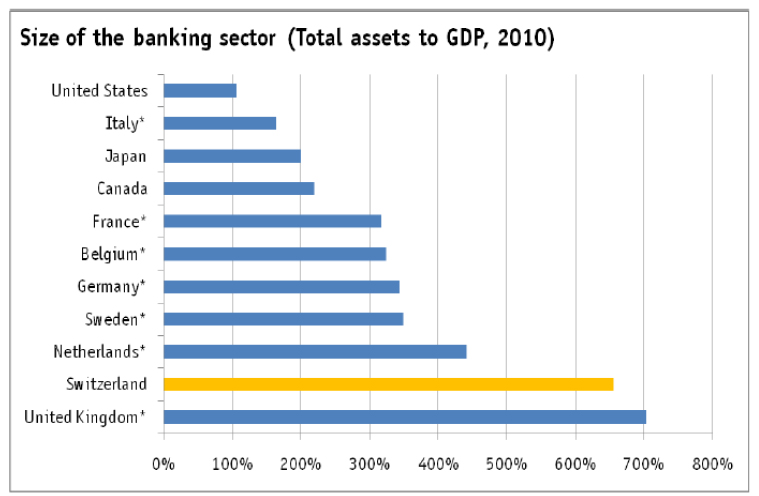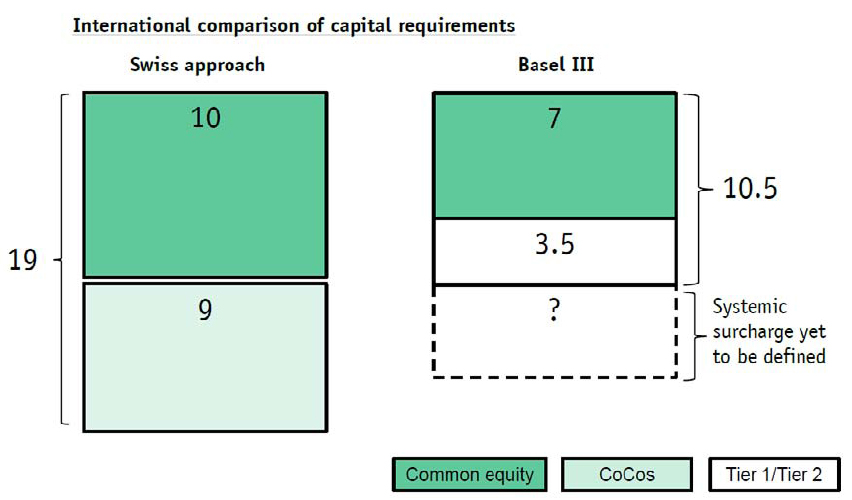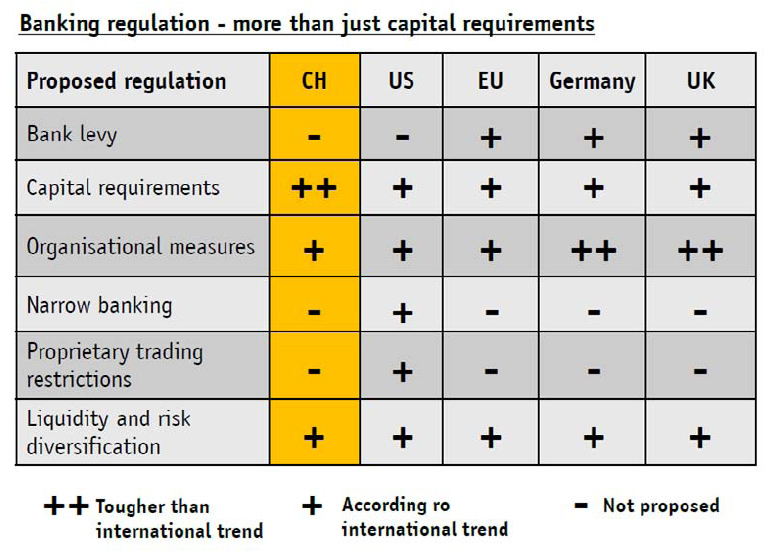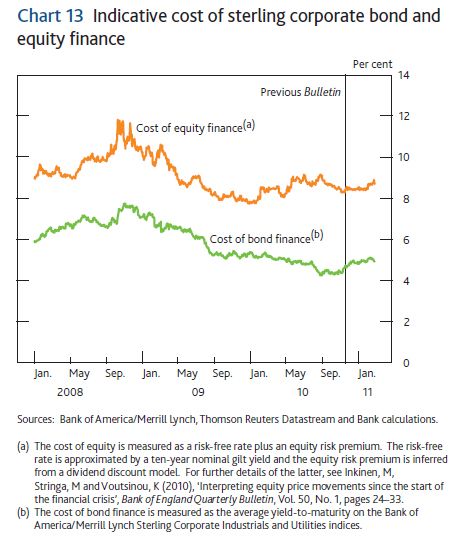The Committee on the Global Financial System, a unit of the Bank for International Settlements, has released a Working Group Report titled Fixed income strategies of insurance companies and pension funds:
Insurance companies will be affected to a greater extent by the introduction of Solvency II, a comprehensive risk-based regulatory framework to be phased in from 2013. Solvency II and other risk-based regulatory regimes in Europe require that assets should be marked to market and that liabilities be discounted at risk-free rates (possibly augmented by an illiquidity premium). Solvency II also requires insurers to hold loss-absorbing capital against the full range of risks on both their asset and liability side to weather unexpected losses with a probability of 99.5% over a one-year horizon. While the latest quantitative impact study by European insurance regulators suggests that the majority of insurance companies will not face an imminent need to raise new equity, they may rebalance their asset portfolios in line with the new risk charges. The proposed changes tend to make it more expensive to hold equity-like instruments, structured products, and long-term or low-rated corporate bonds, whereas government bonds and covered bonds will receive relatively favourable capital treatment.
A related concern is whether life insurers and pension funds can maintain a long-term investor perspective. Factors contributing to this concern among market participants include the steep regulatory risk charges and short horizons to be used for assessing solvency and for addressing funding shortfalls. Prospective volatility in financial statements under international accounting rules may also limit the scope for taking long-term or illiquid positions without any concern for short-term fluctuations in their value. As is the case for institutional investors more generally, these factors tend to encourage a shift away from long term investing in risky assets, in addition to the ongoing trend toward more conservative asset allocations in the aftermath of the financial crisis. This could alter the traditional role of life insurance companies and pension funds as global providers of long-term risk capital. A partial retreat of institutional investors from the long-term and/or illiquid segment of the credit market could reduce the private and social benefits the sector generates through long-term investing, and the extent to which it mitigates the procyclicality of the financial system.
In Solvency II, both assets and liabilities are marked to market, ie fair valued. The present value of liabilities, or technical provision, is defined as the amount an insurer would have to pay to transfer its insurance obligations immediately to another willing buyer. It consists of the best estimate, the present value of the expected future cash flows (net payments to policyholders), calculated on a specified discount rate curve (term structure), and the risk margin, which is an additional premium above the best estimate. How the discount rate is constructed is of considerable importance given that the risk margin, and the present value of liabilities, will increase when this rate decreases.
The current expectation of how this rate will be constructed, is the swap curve (excluding credit risk), augmented by an illiquidity premium for those obligations coming due more than a year ahead. (This was also the discount rate used in Quantitative Impact Study 5.) In addition, an extrapolation (technique) towards a fixed rate (ultimate forward rate) will be used to get the discount rates for longer maturities than those available from market rates in different countries.
The motivation for adding an illiquidity premium, according to the proponents, is that there is general acceptance that the valuation of corporate bonds should take into account risk spreads in the discounting of future cash flows.35 Bond spreads during the crisis far exceeded the cost of credit risk mitigation (CDS spreads), and therefore included a substantial component pricing in illiquidity. The important role the illiquidity premium played in the valuation of assets, while liability cash flows continued to be discounted at the risk free rate, was largely responsible for a substantial shortfall in insurers’ balance sheets. The application of the illiquidity premium on the liability side would aim to reduce this valuation mismatch to avoid situations where insurers are forced to dispose of illiquid assets. The financial condition of insurers would be improved by allowing them to discount liabilities at a higher rate when markets are illiquid. Such a countercyclical mechanism might even mean that insurers would be willing to take on additional illiquid assets in a period of market distress, depending on whether the change in their net asset-liability position would improve their capital position.
Government bonds. Since European government bonds in domestic currency are classified as risk-free under Solvency II, there is a clear regulatory incentive to increase exposure to this asset class, including to euro area periphery debt. However, major insurance companies also rely on internal risk models that account for spread and default risk on sovereign debt. As in the case of banks, this would tend to moderate the incentive to shift toward high-yield sovereign debt even if the overall demand for sovereign debt is likely to rise. On balance, however, one may expect greater demand for long-dated sovereign debt which, all else equal, will further contribute to low long-term interest rates. In addition, insurers’ efforts to reduce their duration gaps tend to reinforce the demand for long-dated government debt from an ALM perspective.
Any sizeable shifts in the government bond space may lead to noticeable financial market implications, given the volume of government bonds on the balance sheets of insurers (as well as on those of pension funds, see Section 2.4). Depending on initial conditions and current bond holdings, further shifts into government bonds may well produce downward pressure on yields, although differentiation across issuer countries is likely to occur.
Corporate and covered bonds. The impact of Solvency II on the corporate bond market is also potentially significant. Historically, insurance companies constitute a key investor base, holding more than 30% of the corporate bond supply.48 Solvency II will impose capital charges on corporate and covered bonds that did not exist under Solvency I, although internal models at large insurers had taken into account credit risk before Solvency II was developed.
Under the standard formula, Solvency II capital charges have relatively steep duration and credit slopes which can be expected to lead to some portfolio adjustments. The capital requirements for corporate and covered bonds are calculated by multiplying a rating-induced shock factor with the duration of the bonds. A BBB-rated bond with a duration of 10 therefore requires 25% (=2.5%*10) in equity capital before diversification benefits. This formula appears to penalise long-term bonds since credit spreads at the long end are less volatile than those at the short end. The credit slope is similarly steep.49 Corporate bonds with a low rating effectively attract a capital charge similar to that of equities.
Under the instrument-specific capital requirements in Solvency II, the following
investment allocations generate the same capital requirement under the standard formula:
- 100% in covered bonds (AAA-rated) with a duration of one year,
- 20% in covered bonds (AAA-rated) with a duration of five years, and the rest in EEA government bonds,
- 13.3% in corporate bonds, AAA-rated, with a duration of five years, and the rest in EEA government bonds,
- 8.6% in corporate bonds, A-rated, with a duration of five years, and the rest in EEA government bonds,
- 1.6% in corporate bonds, B-rated, with a duration of five years, and the rest in EEA government bonds,
- 1.5% in “global equities” and the rest in EEA government bonds,
- 1.2% in “other equities” and the rest in EEA government bonds.
What it looks like to me is that the net effect will be to shift funding risk from the financial economy to the real economy. Once this is in place look for the next financial crisis to be propogated much more thoroughly to the real economy, with lots of firms finding they have debt coming due that cannot be rolled.



